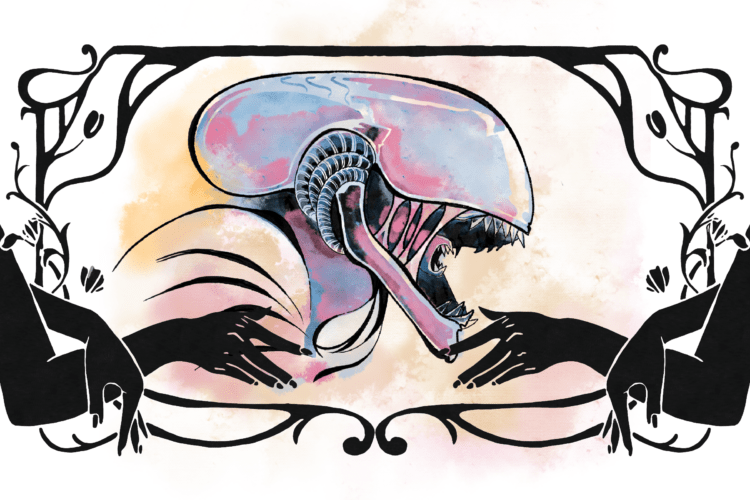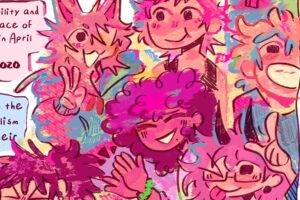
Whether you love being terrified by the Xenomorph or just want to watch Sigourney Weaver be a badass, the “Alien” franchise is beloved by many. It’s more than your standard sci-fi horror series. It’s narrative is centered on labor; the movies draw connections between women’s (loss of) bodily autonomy in pregnancy and the way mega-corporations extort labor, valuing profit over human life.
“Alien: Romulus,” the newest entry into the world of “Alien,” brings this dual-labor struggle back to the big screen for a new generation of audiences while being a genuinely scary viewing experience. Regardless of whether you’ve seen any of the original films, you likely know the visuals of the aliens in “Alien.”
The film opens with an eerie love letter to the original film. In a scene without dialogue, a space station harvests the remains of the destroyed ship from the original 1979 film. Why? To retrieve the body of the Xenomorph that Ripley (Sigourney Weaver) killed years ago. The alien is revealed and the title screen comes to life. Already the audience knows things are about to unfold in unfortunate ways for whomever is on board this space station. All before even meeting the new cast.
At the center of this film are two characters and their changing dynamics as siblings — Rain (Cailee Spaeny) and her android brother, Andy (David Jonsson). They are trapped living in a mining colony owned by the big bad corporation of the “Alien” franchise, Weyland-Yutani. The working conditions of this colony are dire. The characters living in it could become the canary in the coal mine at any minute.
In an effort to escape this life, Rain and Andy, along with a handful of friends, stow away to scavenge a now-abandoned satellite. Needless to say, some shit is about to go down.
Act one is a lesson in tension building. The audience is constantly hinted about the threats that lay ahead for the cast, including a frankly shocking number of Facehuggers. Act two transitions into pure action with threads of lore that tie in the prequels series of “Alien.” Finally, act three is where the real horrors await.
Through all of this, Rain and Andy’s relationship is what gives the film its emotional weight. The siblings, one artificial and the other human, are heavily co-dependent on each other, while simultaneously having to decide whether to leave each other behind.
The Xenomorph is the literal monster of this film, but Andy’s artificial personhood raises many questions and difficulties throughout the film. While on board the space station, Andy’s primary function changes from doing “what’s best for Rain” to “what’s best for the company.” Jonsson does a phenomenal job playing both sides of Andy, imploring the audience feel for the character while never being sure if they can trust him.
Andy is a complicated character. He is a heavily autistic-coded character, as well as being the film’s only Black representation. He fits into a long-running trope of neurodivergent characters being stereotyped as robots. Andy is also portrayed as the most vulnerable in losing autonomy to Weyland-Yutani’s demands. Andy has just as much to fear from the corporation as Rain and the other humans have to fear from the aliens. Both are parasites that will destroy their hosts.
Time and time again, Rain and the other humans put themselves at risk for one another, and eventually, so does Andy. He comes to terms with what his human companions already know on — that the love they share is worth more than being profitable, even when a happy ending is highly unlikely.
And Rain has to see Andy as a full person, not just a machine made to protect her. It’s only through losing the version of Andy that she grew up with that she realizes how “real” of a person Andy is.
Andy and Rain, together, must learn to do what is best for them instead of what is best for the individual or the corporation.
The film delivers a poignant and, at times, heart-wrenching theme to hold onto amidst Rain’s attempts at survival. However, the story wouldn’t function without the rest of the work that was put into this movie. The visuals are stunning, made all the better by its thoughtful and tense lighting. The cinematography builds on the tropes established from the original film while still being a new and modern take. The score ties the whole thing together, using threads of music from “Alien” and the prequel “Prometheus.”
To cap the whole thing off (spoilers ahead) the final twist is truly one of the most horrifying creatures I’ve seen on screen: a human Xenomorph hybrid, (Robert Bobroczkyi). It ages rapidly from an infant to an 8-foot-tall horror. The offspring, as it is credited, is a grotesque, uncanny valley nightmare. It’s made all the more horrifying when you realize it was created mostly through practical effects.
Just looking at the thing made me squeamish. Is the offspring a metaphor for what we’ll all become if we give our lives to mega-corporations? Maybe so.
But the fear I felt watching him on screen also made me feel deeply connected to those first 1979 audiences seeing the original Ridley Scott’s “Alien” film. Where other modern “Alien” movies have gone in entirely different directions from the rest of the series or have failed to live up to the original hype, “Alien: Romulus” manages to feel like a true “Alien” film for a new generation while respecting the history of the franchise.







